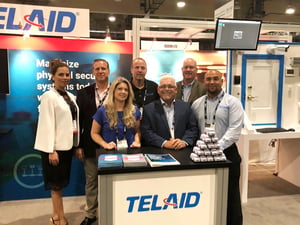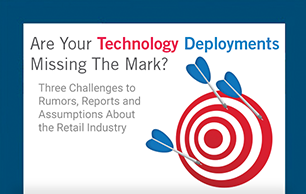As promised, NRF Protect 2018 held last week in Dallas, was a forum for loss prevention (LP) professionals to share insights and knowledge about how they can better do their jobs.
 In many ways, the theme was a familiar one: loss prevention professionals are under tremendous pressure to undertake more and more responsibilities with existing staff and budgets. Not only must they investigate and resolve cases, but they must now train teams on new technologies and collaborate with other departments within retail on a regular basis. There is simply not enough time in the day to accomplish all of these responsibilities with the same headcount.
In many ways, the theme was a familiar one: loss prevention professionals are under tremendous pressure to undertake more and more responsibilities with existing staff and budgets. Not only must they investigate and resolve cases, but they must now train teams on new technologies and collaborate with other departments within retail on a regular basis. There is simply not enough time in the day to accomplish all of these responsibilities with the same headcount.
In touch with loss prevention’s challenges, Telaid proposes some strategies to help LP teams gain efficiencies and maximize their own capabilities.
- Invest in unified physical security solutions– Many LP professionals believe that unified physical security solutions are a possibility only for the bleeding-edge, most profitable retailers. However, technology providers are offering many options for leveraging and integrating legacy technologies and slowly realizing unified physical security solutions as they upgrade cameras, access control and intrusion alarms. By integrating solutions, LP teams can realize increased automation, improved efficiency and better functionality. Even if you can’t invest in a brand new, state-of-the-art physical security solution, you can (and should!) take steps to move toward a unified physical security solution.
- Rely on intelligence and automation – It’s simply impossible for LP professionals to review and evaluate every available data set and every possible loss-causing exception generated by today’s technologies. Fortunately, advanced analytics and machine learning are transitioning that burden off of LP teams and onto automated software platforms that can effectively discern critical and non-critical exceptions. Loss prevention should embrace these technologies and work to apply them as quickly as possible to remove time-consuming evaluation from their plates.
- Outsource the fundamentals – General management of technologies including organization and ongoing asset lifecycle management can take enormous amounts of time, energy and staff. By outsourcing the day-to-day management of technology, alarm monitoring, training and other simple yet critical administrative tasks, you can free your LP team for more strategic activities like investigations.
- Integrate other functions– The technologies that previously fell strictly in the domain of loss prevention are now delivering valuable information and capabilities to functions across retail. The more loss prevention leaders can integrate other functions and benefits into what were traditionally considered “loss prevention” technologies, the more cross-departmental benefits LP can realize. These may include things like additional budget dollars for investing in technologies. An example would be a public view monitor that inhibits shoplifting while serving the dual purpose of serving up valuable promotional and advertising information to consumers.
As technologies continue to advance, LP teams will realize greater and greater benefit from intelligence and automation that delivers information and exceptions seamlessly. On the journey from current to future state, loss prevention leaders can begin taking steps to incorporate best practices now that pave the way to the future.




